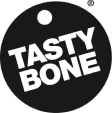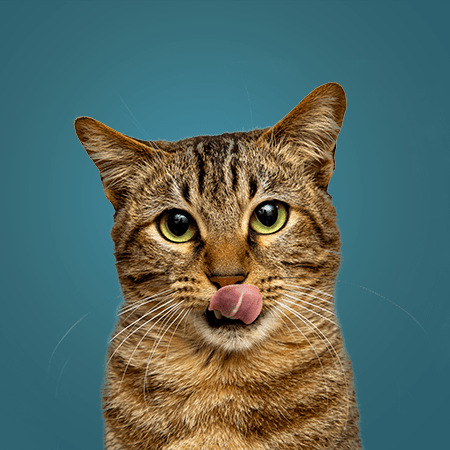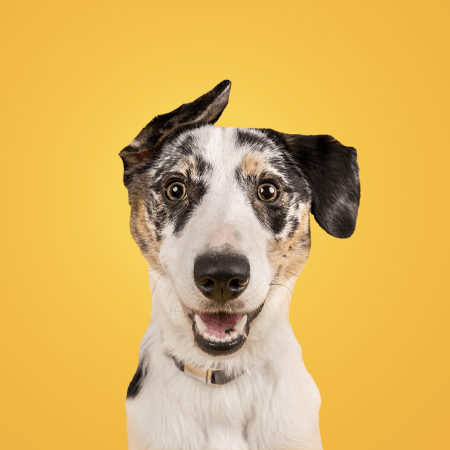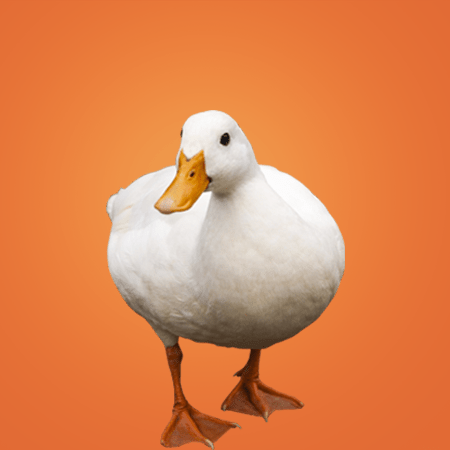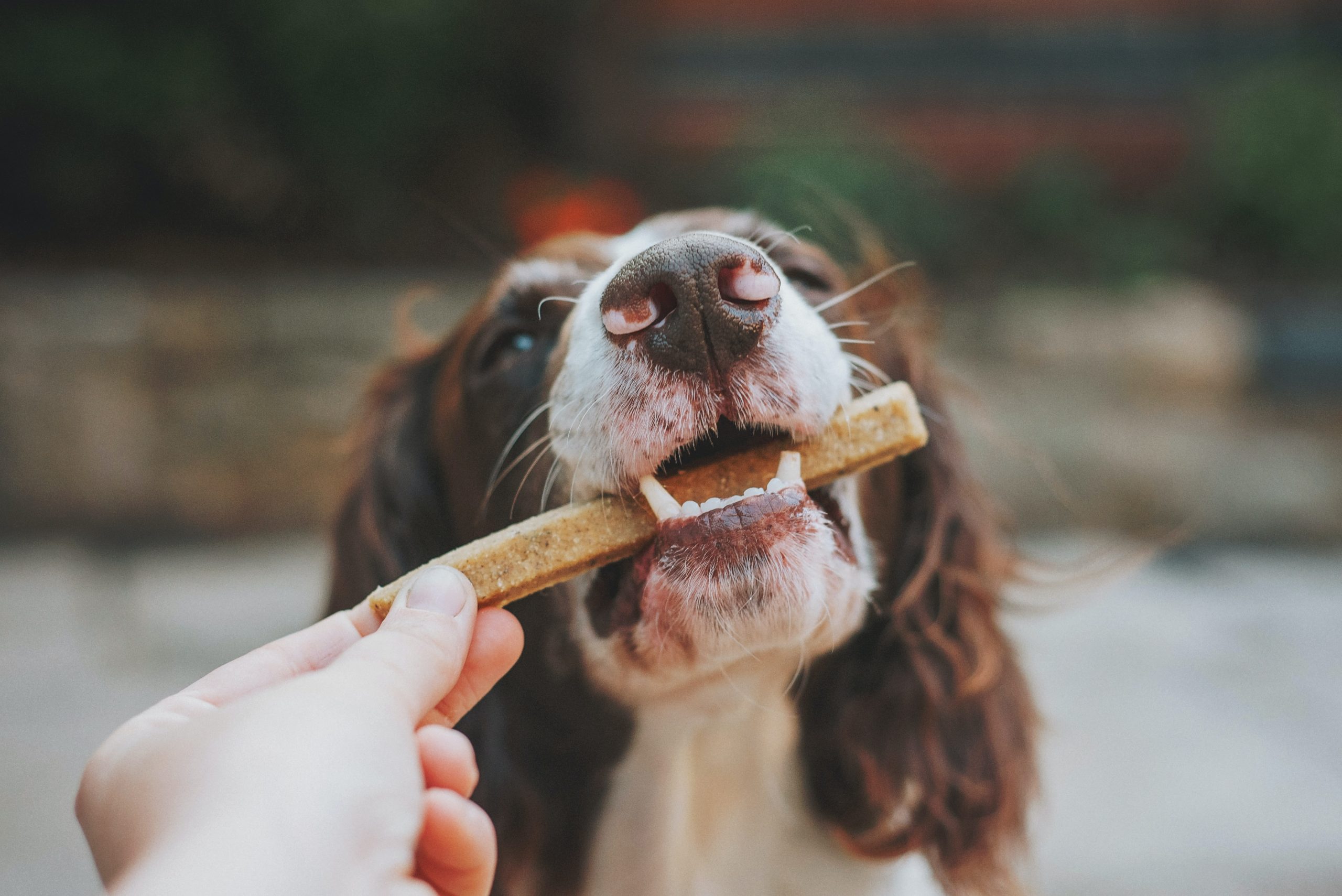
Dogs hold a very special place in their owner’s hearts. So special in fact, that they always look for little ways to treat their pooches throughout the day, from giving them an extra treat just because to sneaking them a taste of their own dinner under the table. While the owner’s intentions are usually in the right place, these tasty treats can add up throughout the day and easily lead to their pet becoming overfed. This is unsurprisingly having a big impact on our pet’s weights, with UK Pet Food finding that 50% of dogs in the UK are overweight or obese.
Obesity can be difficult to manage in dogs, especially with certain breeds which can be more prone to being overweight. To help dog owners learn more about obesity in their pets, we’ve found which breeds are most prone to the condition and taken a closer look at just how much those under-the-table treats could be impacting our dog’s diets.
The top 8 dog breeds most prone to obesity
According to a study published in the Journal of Small Animal Practice in conjunction with the Royal Veterinary College, the eight dog breeds which have higher odds of being overweight are:
- Pugs
- Beagles
- Golden Retrievers
- English Springer Spaniels
- Border Terriers
- Labrador Retrievers
- Cavalier King Charles Spaniels
- Cocker Spaniels
It’s worth noting that there are a number of other factors which the study found to contribute to a dog’s weight. Middle-aged pooches were found to be more likely to be overweight or obese, as well as insured dogs and dogs who had been neutered. However, some factors were found to have little to no effect on weight, including sex and the size of the dog.
How human food impacts our dogs’ diets
One of the potential reasons for the high rates of dog obesity is dog owners treating their pets to human food without knowing how this can impact their diet. In fact, a survey by The Grocer found that a whopping 72% of pet owners admitted to feeding their pets human food. While not all human food is necessarily bad or unsafe for our pets, we often don’t provide them in moderation. This can lead to our pets getting a lot of excess calories without us even realising.
Meat is a common leftover we treat our dogs to which can take up a surprisingly large amount of their daily recommended calorie intake. Take bacon for example — while you may think two rashers seem like a reasonable portion size, for very small adult dogs, such as chihuahuas or miniature dachshunds, this equates to 58.5% of their daily recommended calories. For small-sized dogs, such as pugs, this portion size equates to a third of their daily calories, and for medium-sized dogs, like beagles, it equates to a fifth. Even for very large dogs weighing 40kg+, such as rottweilers, two rashers of bacon is the equivalent of 8.5% of their daily calorie recommendation.
Sausages and roast chicken are two other human foods which can take up a lot of our pet’s daily calories. One thick sausage, for example, takes up 27% of a small dog’s daily calories, 16% of a medium dog’s calories, and for large dogs, such as Dalmatians, this portion size equates to 11% of their overall daily calories.
It isn’t just meat which can be highly calorific for our dogs, however. If you have leftover scrambled egg from your full English, the equivalent of one egg can take up 31% of an extra small dog’s calories, although this comes to just 4% of calories recommended for an extra large dog, such as a Labrador. The lowest calorie human treat on our list is a 10g whipped cream pup cup, although this still takes up just under a tenth of a small dog’s daily calories.
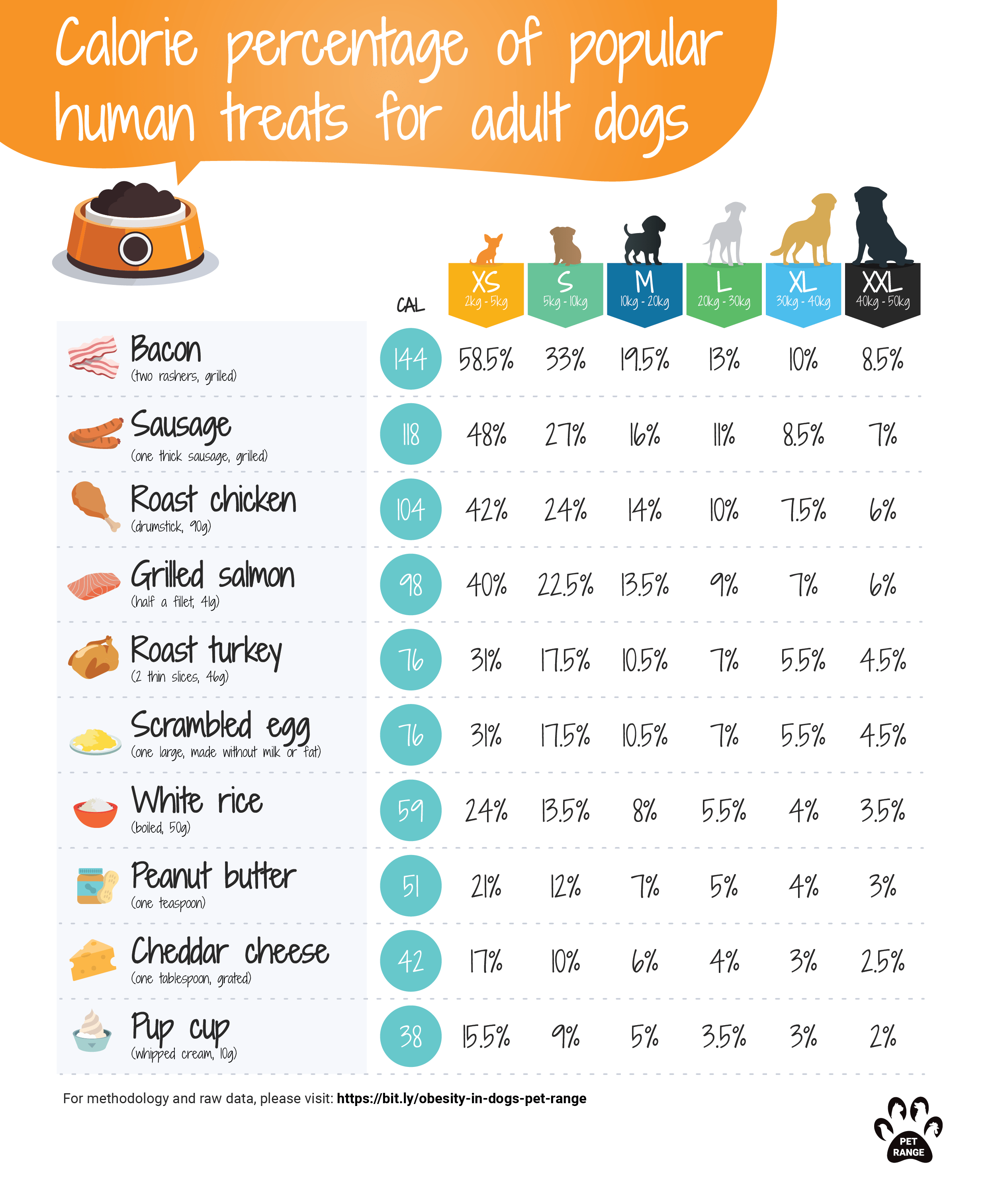
Click here to explore our full findings, which look at the calorific impact of various other human foods on our pet’s diets, from white rice to peanut butter.
How obesity impacts a dog’s health and wellbeing
Obesity can have a significant effect on a dog’s health in a number of ways. One major impact the condition can have is on bone health, as extra weight can put more stress on bones, joints, and ligaments. This can in turn cause bone conditions like arthritis, as well as joint pain and an increased risk of injuring the ACL. Heart conditions, such as heart disease, and breathing difficulties can also be more common in overweight or obese dogs, as well as diabetes and bladder stones.
Aside from these health conditions, obesity can have a big impact on a dog’s wellbeing and day-to-day life. Dogs carrying excess weight can find it much more difficult to move around and get outside, meaning it may end up affecting their playtime and socialisation with other dogs.
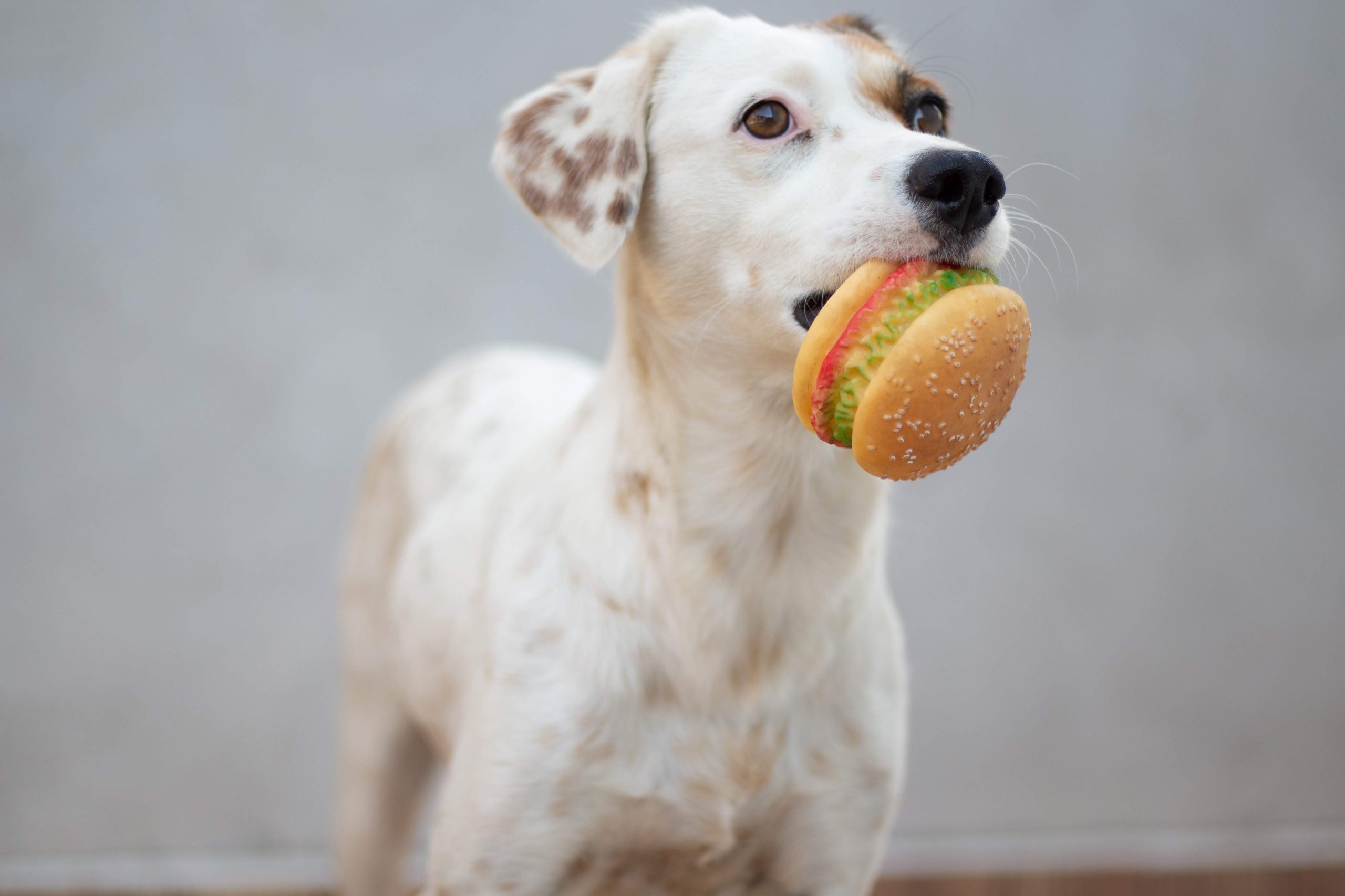
What the experts say
Liz Clifton, dog bite prevention educator and rescue dog rehabilitator, is unsurprised with the recent increase in dog obesity rates, saying she has “noticed that this has increase over the last ten years and especially since lockdown. When families spend less time active outside this flows to their dogs too.“
Liz also says that your pet’s upbringing and background may have some bearing on how likely they are to be overweight: “If you adopt a rescue dog, especially an ex-street dog, remember that they will have had to fend for themselves and may be more prone to overeating and obesity. This is because on the streets they would have had to eat whatever they found whenever they found it due to scarcity of and competition for food.”
When it comes to helping your pet stay a healthy weight, Liz tells us it’s important to stay observant of not just your pet’s physical health but their behaviour too. You should “take time to notice how your dog is behaving and how freely they are moving. Are they showing any signs of pain or discomfort when they move? Or are they reluctant to move at all? If you find that they are, always get a veterinary opinion.”
Stress can also have an impact on a dog’s weight, Liz tells us: “As with us humans it’s easy for dogs with a high stress baseline to hold onto excess weight and fall into obesity. So take time to notice how your dog is behaving and if they are showing any signs of stress.”
Some signs of stress that Liz tells pet owners to look out for include “lack of interest in food, water, usually enjoyed activities, or company with you or other members of your family (all species included), as well as excessive licking, howling, whining, sleeping, panting, or regression with toileting habits.”
The good news is that there are a number of ways to help your dog relax more to reduce their underlying stress levels. A few suggestions from Liz include “enjoying a snuggle, going for a gentle walk, dog yoga, playing dog calming music, or Reiki.” The dog expert also tells us it’s important to look for an underlying cause of stress to help our pets overcome it and feel calmer. Liz says these stressors could be anything from “physical pain or discomfort, to any recent changes to their environment, family situation, or routine. When in doubt always seek your vet’s advice and remember that there are also holistic vets if you prefer.”
Tips for reducing your pet’s calorie intake
If your dog is overweight or obese and you want some advice on cutting down their calories, consider using the following tips to help them reduce their calorie intake.
Remember, you should always speak to a vet before making major dietary adjustments. Weight gain and obesity may be indicators of other conditions, such as hypothyroidism, so your vet may want to rule other factors out before starting your pet on a new diet.
Provide them with filling, nutrient-rich meals
Ensuring your dog receives a balanced and nutritious diet isn’t just crucial for maintaining their overall health and wellbeing, but it can keep them satisfied for longer, which can lead to a reduction of calories consumed. Opt for high-quality dog food that is rich in essential nutrients and is designed to provide satiety. Look for options that include lean proteins, a variety of vegetables, and wholesome grains. If your pet is grain-free, opt for dog foods with an alternative source of carbohydrates, such as chickpeas.
Find non-food based treats
Rewarding your furry friend doesn’t always have to involve treats high in calories. Consider alternative, non-food-based rewards, such as extra playtime and affection, or even a new toy. Not only will this help reduce your dog’s calorie intake, but it can also enhance the bond between you and your pet. Look for interactive toys that stimulate their mind and keep them engaged without adding extra calories to their diet.
Make exercise fun
Increasing your dog’s physical activity is an effective way to manage their weight and burn calories, however, you may find your pet is less active if they are overweight or obese. So try to make exercise as enjoyable as possible for them by incorporating activities they love. Whether it’s a game of fetch, a brisk walk, or even a swim, find activities that both you and your dog can enjoy together. Regular exercise can also help keep your pet mentally stimulated and have a positive effect on their mental health. Just remember to ease your pet slowly into new forms of physical activity, especially if they are obese, as a major change to their routine can be a big shock to the system. If unsure, ask your vet for advice on the best activities for your pet to try out at the start of their weight loss journey.
Ensure they enjoy everything in moderation
Like humans, dogs can benefit from a balanced and moderate approach to diet and treats. While it’s essential to cut down on excessive treats and high-calorie snacks, completely depriving your dog may lead to cravings or unhealthy behaviours. So make sure you allow them to enjoy the occasional treat, but choose wisely. Opt for low-calorie treats or break larger treats into smaller portions to spread the enjoyment without overindulging.
“It’s not surprising that obesity can have such a big impact on a dog’s health, but many of us don’t realise just how many conditions can be linked to having excess weight. From bone health to heart health to simply overall wellbeing, obesity can come with a huge toll on your pet. Fortunately, there are a number of ways to help your pooch stay a healthy weight, even if they’re on the obesity-prone list! To help your pet lose weight healthily and sustainably, ensure they have filling, balanced meals and enjoy their food in moderation
“Cutting down on human treat food can also make a big difference. Most of us don’t realise just how calorie-dense our food can be for our pets. This is especially the case for smaller dogs and breeds which are more obesity-prone, such as pugs. For small dogs like these, a single sausage can take up almost half of their daily recommended calorie intake.
“It’s important to note that it’s always a good idea to see a vet if you have concerns about your pet’s weight. Every dog is different, and just like humans, they all have different nutritional needs. Whether your furry friend is a puppy or fully grown, consult with the vet before making major dietary changes.”
- Lisa Melvin, Pet Range
Methodology:
We used data from the Journal of Small Animal Practice research paper to find the eight breeds of dog most prone to obesity.
To discover the calorific impact of human food on a dog’s diet, we first calculated the median recommended daily calorie intake for six sizes of dog, using the Pet Nutrition Alliance calorie calculator. We then used calorie data from Nutra Check on 10 types of food commonly given to dogs to work out the percentage of an adult dog’s recommended daily calorie intake this would equate to depending on their size.
To view our full research, click here.



